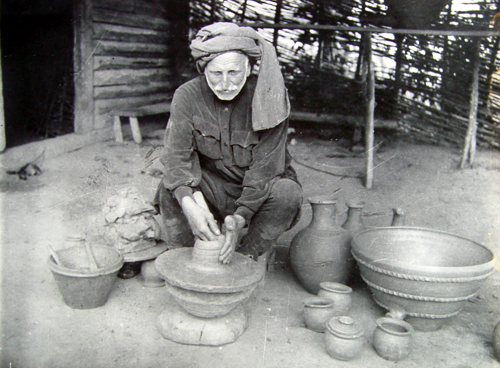
Although the cultural anthropology of Samegrelo has not been systematically studied, the following section provides a glimpse into some of the social and cultural features that set it apart from the other Georgian regions.




Many of Samegrelo’s people speak a language—Mingrelian, also known as Megrelian or Megruili—that split off in the first millennium BCE from the language that evolved into modern Georgian.[1]
Petitions were arranged through one of two administrative offices (Georgian and Russian) that were housed in separate buildings near the palace. In addition to applications for petitions, these offices handled all official correspondence with the ruler, including circulars from the Russian governor in Tbilisi and other official communications.
Starting in 1801, three successive Russian Tsars—Paul I, Nikolas I, and Alexander II—abolished the Georgian kingdoms and principalities, and sought to assimilate the Georgian nation into Russia. One of the principal means by which this assimilation was pursued was an attempt to break down Georgians’ common linguistic identity into smaller parts. Thus, in the second half of the 19th century, the Russians began to replace the Georgian language in Samegrelo’s schools and churches with Mingrelian; tried to introduce a separate script for the Mingrelian language; and sought to translate culturally defining works such as the Bible and the epic 12th century Georgian poem The Knight in the Panther’s Skin into Mingrelian. However, the plan proved unsuccessful. Many common people opposed it by staying away from Mingrelian church services and keeping their children out of the public schools, while members of the aristocracy led protests against it. In the face of strong opposition, the Russians relented and discontinued the operation.
Traditional Mingrelian food is poignant and richly mixed with spices. This is because in pre-modern times, the spread of malaria was a huge concern in Samegrelo’s mild sub-tropical climate, and early residents of the region discovered that consumption of large amounts of pepper helped to stave off the dreaded illness. The result was a tradition of spicy cooking that has continued to the present day.
Mingrelian cuisine utilizes several kinds of spices, often as sauces. Traditional meals generally consisted of ghomi (boiled corn flour), suluguni (a fatty cheese), and fried meat with spicy and peppery sauces such as adjika. Two special dishes were reserved for holy days and special guests: elarji and satsivi. Throughout Georgia, these are regarded as the greatest delicacies of Mingrelian cuisine.
Of the more than 500 types of grapes produced in Georgia, Samegrelo produces over 60. The ojaleshi grape is generally considered to produce the finest wine—a semi-sweet red wine that has a faint aroma of wild roses and a distinctive bright ruby color.
In the second half of the 19th century, ojaleshi almost disappeared. Until that time, the grapes were not cultivated on vines as in Europe, but grown on trees as wild grapes, resulting in depletion as the demand for their wine grew over time. (In Mingrelian, the word ojaleshi means “growing on trees.”) Fortunately, in the mid 1800s, Achille Murat—a Frenchman and the husband of Salome Dadiani, sister of Samegrelo’s last Principal—began to cultivate ojaleshi in the European way, as part of a business project to produce and market the wine. Thus saved from oblivion, ojaleshi wine is today made in the Tsageri and Martvili regions of Samegrelo, and its production has spread to other parts of Georgia as well.
Mingrelian folk music is polyphonic, with lyrics in the Mingrelian language. Songs tend to have a melancholic tempo and feel; Mingrelians claim their music reflects the tragic history of their frequently war-torn and impoverished land. Mingrelian romantic songs are often accompanied by the chonguri, a distinctive wooden four-string instrument.
The best-known Mingrelian folk song is the lullaby “Megruli Nana.” Some scholars speculate that the enigmatic words of the refrain, Nana Nanina, are the names of an ancient goddess of summer. The tune from “Megruli Nana” was used by the Russian composer Tchaikovsky in his popular Christmas ballet The Nutcracker. Another well-known song of the region, “Dadianis Modzakhili,” honors the Dadiani family.
Another unique cultural characteristic of Samegrelo is the traditional Mingrelian house. Residential architecture evolved slowly over the centuries until, by the 20th century, Samegrelo could claim two distinctive types of houses: jargvali and oda.
The former is a wooden hut made from split logs and devoid of windows—daylight streams in through the open door. A hearth is at the center of the main room, so as to efficiently warm the house in winter. The hearth is also considered a sacred place that symbolizes the cosmos, with three layers—heaven, earth, and hell. In recent decades, the jargvali has been used mainly as an extra kitchen for preparing big dinners, rather than as a residence.
The oda is a common type of house, also made from wood. The entire building rests on piles, which points to the origin of the design in areas where frequent flooding led to a demand for houses raised above ground level. Another characteristic detail is the richly decorated wooden balconies at the back and front of the oda; ornamentation on balcony columns and arches typically depicts flowers and leaves. In the traditional oda there are four rooms, each with its own fireplace: a dining room, a reception room, and two medium-sized bedrooms. The oda could be considered a forerunner of the modern mobile home, as it is designed so that it can be easily disassembled and rebuilt in another place.
Traditional Mingrelian homes typically contain two additional small facilities: one for storing provisions and another with several kvevris (clay brick vessels for storing wine). Vineyards are sacred places for all Georgians, and many traditional Mingrelian homes had vineyards where family members lit candles and prayed.
Today, few traditional Mingrelian houses remain. Brick has replaced wood as the primarily material for building new houses, because it is cheaper and more durable. However, new residential construction continues to incorporate distinctive characteristics of traditional houses, such as columns, balconies, and fireplaces.